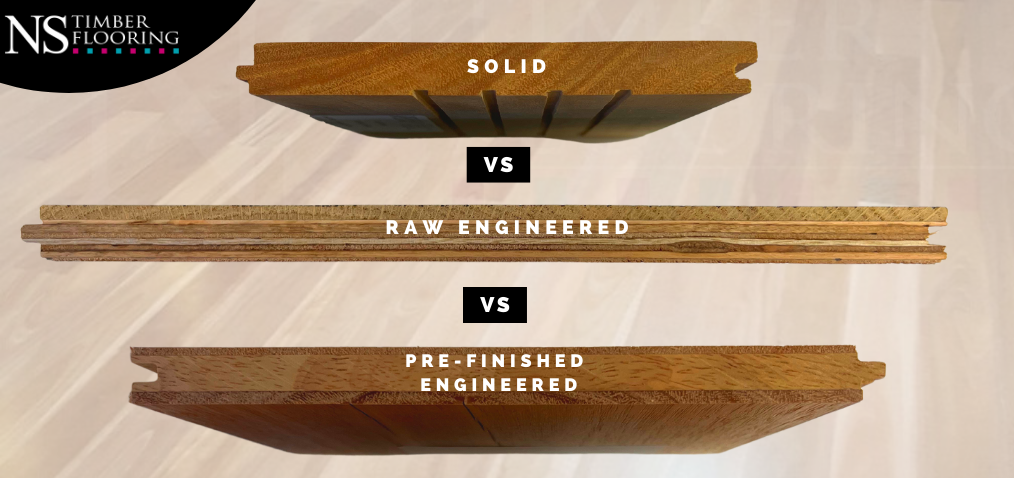If you’re looking at installing floors in your new home, one of the first questions you need to consider is whether you want solid timber or engineered timber flooring.
In our experience, when choosing a timber floor, homeowners are quick to focus on the species (or type) of wood, colour, width, length and price, but overlook the construction and whether they would be better with solid or engineered timber flooring.
Why is it important?
This initial decision will affect the lifespan of your floor, its durability, the time it will take to install, how many times you can sand and polish, design and stylistic features of the boards.
At NS Timber Flooring, we offer a wide range of solid timber floors, and engineered floors PLUS a third option which is a combination of the two – Raw Engineered flooring.
Read on to find out the pros and cons of the three different flooring types to help you make an informed decision.
What’s the difference between Solid Timber Flooring and Engineered Timber Flooring?
Solid Timber Flooring
As the name suggests, solid wood flooring is made of solid wood throughout. Usually, it is made of hardwood species such as blackbutt, Oak or Spotted Gum. One of the main advantages of solid timber hardwood flooring is that it can be sanded and polished many times over the course of its lifespan.
Engineered Flooring
Engineered wood flooring looks very similar to solid timber flooring on the surface. However, the surface is made up of a relatively thin layer usually 4mm of hardwood, bonded over a substrate of high-quality plywood or pine. Engineered flooring is slightly cheaper than solid timber, but the crucial thing to remember is that most types of engineered flooring cannot be sanded and polished due to the surface preparation, bevel edges and even the surface coating.
When weighing up the pros and cons, here’s what you’ll want to consider:
Solid Timber Flooring: Pros and Cons
Pros
- Quality look and feel.
- Very smooth surface with no joining edges.
- Easy to clean and maintain.
- Ages gracefully.
- Very warm feel for your home.
- Can be sanded and polished multiple times.
- With resanding can last a lifetime.
Cons
- Total installation and finish process takes longer.
- Can be subject to seasonal climate change.
- Concrete sub-floors require installation over plywood.
Engineered Timber Flooring: Pros and Cons
Pros
- If suitable to float it can be cheaper than solid timber flooring.
- Quick and clean installation process.
- More variations available.
Cons
- Most engineered flooring is not suitable for re-sanding and polishing and requires replacement at the end of its lifespan
The third option – Raw Engineered flooring
At NS Timber Flooring, we also offer a third option which is a hybrid of solid timber and engineered flooring.
Raw Engineered is a uniquely constructed engineered timber flooring product that boasts a raw or uncoated solid timber surface, allowing for complete control of the finished appearance.
This engineered construct is available in five different timber species, all of which feature a 15mm with 4mm or 19mm with 6mm top layer on a strong plywood backing.
Features and benefits of Raw Engineered flooring
- High-quality solid timber raw veneer (available in 5 species)
- Excellent strength and wear resistance
- On-site finishing for complete control of stain and gloss level
- Install over existing timber, sheet floor and concrete
- Able to be re-sanded
If you’re unsure which type of flooring will best suit your needs and lifestyle, call the NS Timber Flooring team on 07 3881 1158 or send us a message online here.






